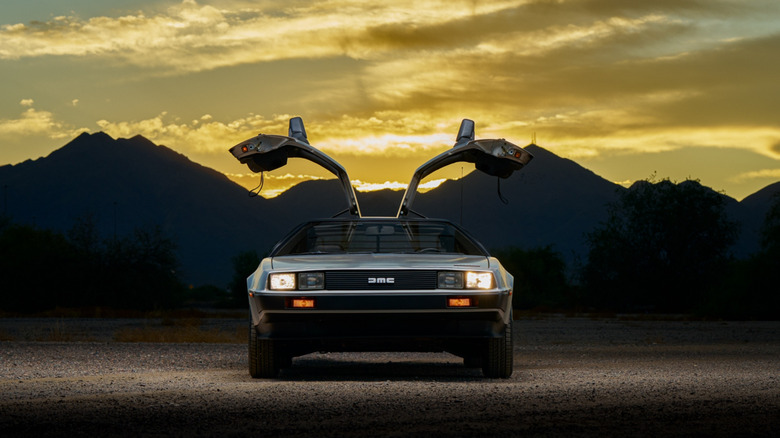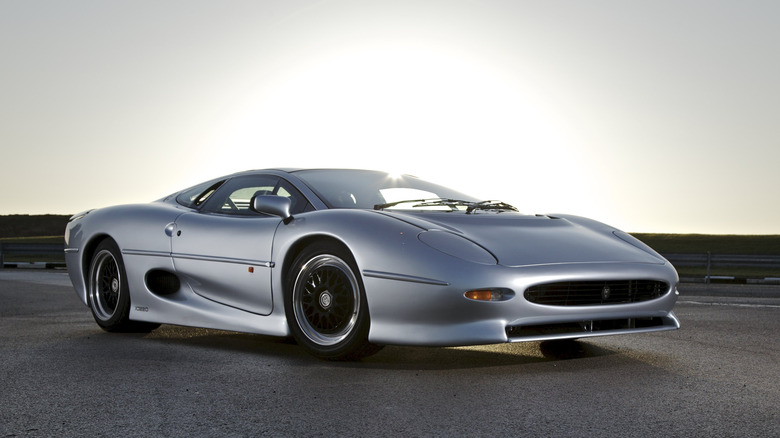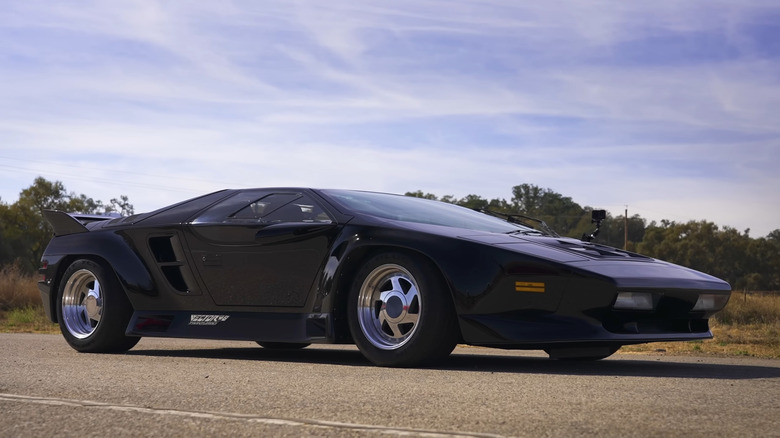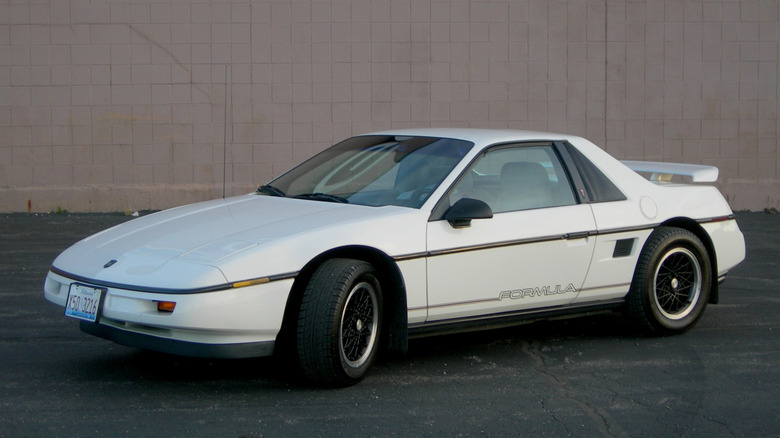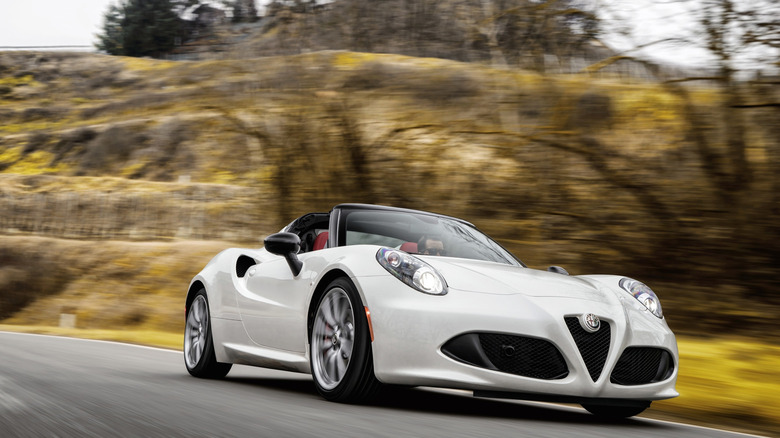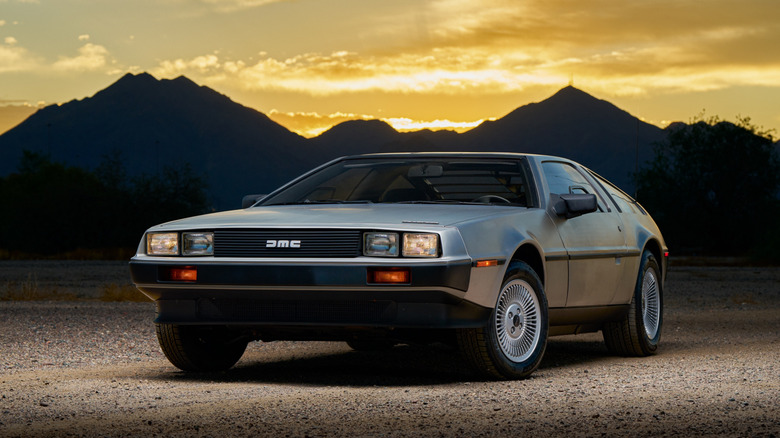5 Sports Cars That Didn't Live Up To Expectations
Sports cars have never made sense financially. Heck, many automakers function just fine without any sports car in their portfolio. Yet, there is value in having enthusiasts on your side. Just look at Toyota and its resurgence in enthusiast circles with the Gazoo Racing performance brand. Or Hyundai's booming N division, which even gave us an all-electric track-star — the Ioniq 5 N.
Sometimes, however, automakers are too eager to attract enthusiasts and make hard-to-deliver promises even before the car reaches production. Just look at the "broken promise man" himself — Elon Musk. We still wait on the huge 2025 Tesla Roadster MkII announcement, where Musk will wow us with a sub-1-second 0-60 acceleration time. 250- mph top speed. 620-mile range. Rocket thrusters. And all that for just $200k!
The thing is — automakers have been promising impossible things before we even knew Musk existed. Wild performance figures were often promised. Or a driving experience that sets a new standard in the industry. Sometimes, it was good old cost-cutting that broke promises. Either way, these five sports cars didn't live up to expectations, and ended up on the wrong side of history. Let's have a closer look!
1. Jaguar XJ220 (1992 to 1994)
The Jaguar XJ220 holds a special place in automotive history. It was the world's fastest production vehicle before the mighty McLaren F1 arrived, achieving 212 mph, or 217 mph with an unrestricted catalytic converter. Even to this day, that's the highest top speed achieved by any Jaguar production vehicle. 0-60 also took just 3.6 seconds.
Yup, not a small feat for a car powered by a small, 3.5-liter V6 engine and a six-speed manual. Sure, it had two turbos, which brought the output to 542 hp and 475 lb-ft of torque, but that doesn't make its top speed any less impressive. Its fluid, timeless shape is stunning, too. The swooping, wind-cheating curves, elegant, elongated tail, and excellent attention to detail sets it apart from other supercars of its era.
Okay, so what is this remarkable 1990s machine doing here? Well, the XJ220 that Jaguar promised was way, way more impressive. Notably, the XJ220 concept that the automaker has shown at the 1988 British International Auto Show had a naturally aspirated 6.2-liter V12, which drove all four wheels — not just the rear like in the production vehicle.
Furthermore, Jaguar said the XJ220 would have technology that has become standard in supercars only in recent years, like active aero, height-adjustable suspension, and rear-wheel steering. If that car panned out like Jaguar planned, the McLaren F1 wouldn't have been the legend it is today. As it stands, the V6-powered XJ220 almost went into obscurity, with Jaguar selling only 281 of the 350 planned units. So, unsurprisingly, the XJ220 is a rare sight on U.S. roads today.
2. Vector W8 (1989 to 1993)
The Vector W8 is another story of failed promises. Imagined by Vector founder and designer Gerald Wiegert, this striking supercar should've obliterated the competition, including cars like the McLaren F1, Bugatti EB110, and yes, the Jaguar XJ220. Its body is even more futuristic looking than Lambo's Countach. The sharp wedge shape, wraparound windshield, and chiseled bodywork give it fighter-jet aesthetics, while the aggressive vents look straight out of Cyberpunk 2077.
But the engineering behind the W8 is even more exotic. Wiegert wanted a bonded aluminum monocoque and extensive use of carbon and Kevlar for weight reduction. Heck, he even decided to use 5,000 aircraft-grade rivets instead of welding! The 6.0-liter V8 twin-turbo engine wasn't any less impressive, producing a staggering 625 hp and 630 lb-ft of torque! As a result, even with the three-speed automatic, Car and Driver measured a 0-60 time of just 3.8 seconds, while Vector claimed a theoretical top speed of 242 mph!
Three-speed automatic? Yup, Vector's engineers thought that the torquey engine didn't need more ratios. Really? The Ferrari SF90 Stradale has 593 lb-ft of torque just from its internal combustion engine alone, and an eight-speed dual-clutch transmission. Yes, Vector W8's transmission was equipped with manual shifting, but it's not like you could do much with only three forward gears.
Still, the biggest issue with the Vector W8 is that it never worked as intended. The car was famously unreliable, with transmission and overheating issues. André Agassi's W8 also melted the boot floor carpeting due to excessive heat, which was the final nail in the coffin for the Vector W8.
3. Pontiac Fiero (1984 to 1988)
The mid-engine chassis configuration was surging in popularity during the 1970s and 1980s, spearheaded by supercars like the Lamborghini Miura and Dino 206 GT. Quickly, automakers started making affordable mid-engine machines, like Fiat's charming X1/9 and Toyota's legendary MR2. Even the lesser-known Matra had a competitor with the three-seat Murena. Naturally, General Motors wanted in on the action, and in 1983, launched the Pontiac Fiero.
GM's first mid-engine sports car had a lot of weight on its shoulders. Not only did it need to compete in an increasingly crowded segment, but it had to reignite Pontiac as GM's exciting brand. However, there was a problem — GM also wanted the Fiero to be fuel-efficient. So, the team led by Pontiac vice president Bill Hoglund decided that a lightweight chassis was enough to keep the Fiero efficient. Oh, and the initial 2.5-liter four-cylinder engine produced miserable 92 hp. Fortunately, Pontiac introduced a 2.8-liter V6 in 1985, good for 140 hp, which provided enough oomph for a spirited drive.
Even so, the team had strict budgetary constraints, so the Fiero was a mishmash of parts from other GM vehicles. That's not uncommon in the automotive industry, but Fiero's plastic body panels certainly are. Yes, they improved the crash protection and could be replaced more easily. However, the four-cylinder engine was very unreliable, with some Fieros even catching fire — not something you'd want in a plastic car. So, in the end, Pontiac's fun-to-drive, handsome commuter car was swept away by history. It ended up being a failure, rather than a legend.
4. Alfa Romeo 4C (2013 to 2020)
Alfa Romeo is perhaps the brand with the most legendary sports cars. Front-wheel drive. Rear-wheel drive. Front-engine. Mid-engine. You name it, there is a legend with an Alfa Romeo badge on it. When the famous Italian brand first showed the 4C Concept at the 2011 Geneva Motor Show, enthusiasts were convinced that a new Alfa Romeo icon was born. You couldn't fault them. Put simply — the Alfa Romeo 4C is pure art in motion. With its spot-on proportions, curvy body lines, and iconic Alfa Romeo details, it's easily one of the best-looking cars of this millennium.
Crucially, though, the 4C is a featherlight, mid-engine sports car designed specifically for driving pleasure. Thanks to the advanced carbon tub, the coupe version weighs unbelievably low 1,973 pounds. So, even though it came exclusively with a 1.75-liter turbocharged four-cylinder that produced 237 hp, the 4C still sprinted to 62 mph (100 km/h) in brisk 4.5 seconds. The snappy dual-clutch gearbox certainly helped there, but yeah, this means that there was no stick-shift option.
Still, that wasn't the big issue with the 4C. Nor the cheap, flimsy interior. After all, Alfa Romeo equipped it with non-assisted steering, which, in theory, should've translated into a more visceral driving experience. Unfortunately, according to many reviewers, the 4C didn't deliver. According to some, the steering was too heavy, but most agreed that the handling left a lot to be desired. Too aggressive at turn in, followed by too much understeer. Or the total opposite of how a lightweight, mid-engine sports car should handle.
5. DeLorean DMC-12 (1981 to 1983)
No other car from the 1980s sparks as much nostalgia as the DeLorean DMC-12. But it's not because it set the world on fire when it launched in 1981. You know where this is going — DMC-12's iconic role as a time machine in the "Back to the Future" franchise made it a cult icon. It looked futuristic, and once it reached 88 mph, it did the most futuristic thing ever — travel through time. Thanks to this, it's more popular among common people than any other vehicle on this list. Heck, most sports cars, ever.
Unfortunately, the DeLorean DMC-12 didn't do the sports car thing as well as its contemporaries. Car and Driver called it "fun-to-drive" in its first review but ended up disappointed by the performance. Propelled by a Peugeot-Renault-Volvo 2.85-liter V6 with comically low 130 hp, the DMC-12 reached 60 in glacial 9 seconds and had a top speed of 120 mph.
A car that looks as cool as the DMC-12 should be quicker, you'd agree. Still, what had hurt John Zachary DeLorean's dreams of a futuristic sports car more were the undelivered promises. Yes, the DMC-12 had stainless-steel bodywork, just like its creator intended. Gullwing doors, too. Heck, the amazing shape was even penned by famous designer Giorgetto Giugiaro.
However, DeLorean's plan of a Wankel engine was a dead end, so the company had to accept the slow PRV V6. Moreover, the initially planned "Elastic Reservoir Moulding" chassis had to be replaced with the simpler Vacuum Assisted Resin Injection (VARI) structure. Put simply, the production DMC-12 was just a shadow of the concept.
